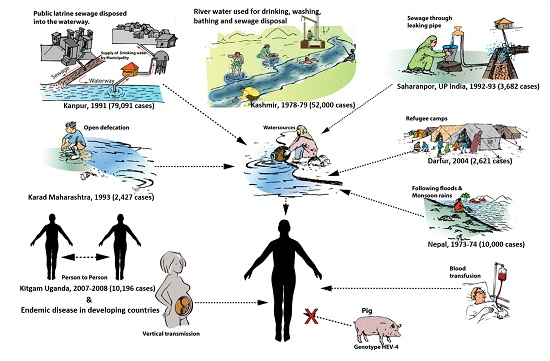Transmission of Hepatitis E Virus in Developing Countries
Abstract
Share and Cite
Khuroo, M.S.; Khuroo, M.S.; Khuroo, N.S. Transmission of Hepatitis E Virus in Developing Countries. Viruses 2016, 8, 253. https://doi.org/10.3390/v8090253
Khuroo MS, Khuroo MS, Khuroo NS. Transmission of Hepatitis E Virus in Developing Countries. Viruses. 2016; 8(9):253. https://doi.org/10.3390/v8090253
Chicago/Turabian StyleKhuroo, Mohammad S., Mehnaaz S. Khuroo, and Naira S. Khuroo. 2016. "Transmission of Hepatitis E Virus in Developing Countries" Viruses 8, no. 9: 253. https://doi.org/10.3390/v8090253
APA StyleKhuroo, M. S., Khuroo, M. S., & Khuroo, N. S. (2016). Transmission of Hepatitis E Virus in Developing Countries. Viruses, 8(9), 253. https://doi.org/10.3390/v8090253






